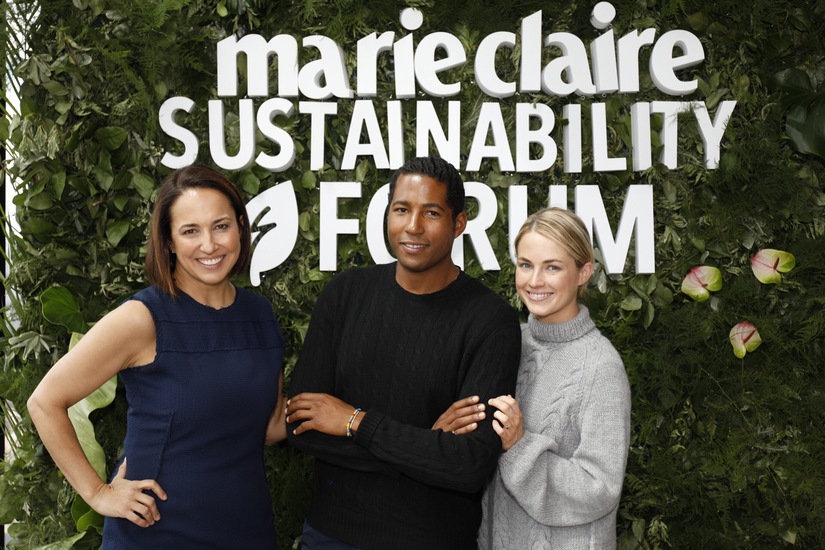
Marie Claire USA Hosts ITS First Sustainability Forum
Marie Claire’s editor in chief Anne Fulenwider gathered a panel of fashion and beauty sustainability experts for Marie Claire’s first forum on the subject. Held at Hearst Tower, the forum featured some of the leading experts from fashion and beauty’s largest companies to clarify what is an extremely complex and increasingly urgent issue for an audience of social media influencers and Marie Claire readers.
The forum did a good job highlighting key issues, one of which Fulenwider laid out at the outset: “There’s this oft-quoted statistic out there that the fashion industry is the number-two most polluting industry in the world after oil and gas,” she said. “I did some research and we can’t find the source of that quote. We don’t know exactly how it was measured; in fact, we don’t even know how someone would measure that. So there is a lot of complexity to this issue.”
Cara Smyth, vice president of Glasgow Caledonia University New York and founding director of the Fair Fashion Center, moderated a panel that included Marie-Claire Daveu, Kering’s chief sustainability officer and head of international institutional affairs; Amanda Hearst and Hassan Pierre of ethical fashion e-commerce site Maison-de-Mode, and Shane Wolf, founder of Seed Phytonutrients and general manager worldwide of Redken Pureology and Mizani. Kara Hurst, Amazon’s head of worldwide sustainability, spoke on the e-commerce behemoth’s initiatives, and Rebecca Jarvis of ABC News moderated another panel with Burak Cakmak of Parsons The New School; Emily Scarlett, H&M USA’s media relations and sustainability manager, and Piyush Jain, Unilever’s general manager and vice president of marketing hair care for the U.S.The experts managed to cover a lot of ground within the sustainability framework while distilling some of the top issues into consumer-friendly, practice-driven laymen’s terms. Sustainability has become one of the fashion and beauty sector’s main concerns and areas of investment, yet it can be difficult for consumers with a genuine if somewhat passing interest in the topic to parse and apply to one’s own life.
Several other panelists presented staggering statistics that suggested that while raising consumer awareness and encouraging action on the part of the individual would go a long way, it’s a lot to ask.
First, few can agree on a single definition of the term “sustainability” and the terminology doesn’t matter all that much. “Today is not the time to spend on the definition, but it’s better to act,” said Daveu, noting that Millennial clients care a great deal about sourcing and production, but not word choice. “They don’t come into the boutique saying, ‘Can you tell me the five most important [sustainability] criteria,’ but they will ask about the traceability and say, ‘Can you tell me a little more about the precious skins and animal welfare where it’s been produced?’”
Hurst also dismissed the importance of the word “sustainability” at the consumer level. “You can take the word sustainability off the table,” she said. “We have taken a lot of time talking about it to our customers, talking about our products in this green language and frankly, that’s just alienating. Instead of talking about that, talk to people about information transparency and providing that in a way customers can use to make their own decisions about how they purchase and shop and review.”
Hearst and Hassan built Maison-du-Mode so that users could “shop without a conscience,” meaning they can go on the site and know that everything complies with some sort of ethical standard, rather than hunting around for sustainable products on their own. Still, aesthetic and quality always trump sustainability for Hearst and Hassan. “At the end of the day, you’re not going to buy something because of the story,” said Hearst. “You’re going to buy it because it’s something you want to wear.”
Scarlett noted that H&M has a garment recycling program at every single one of its stores in all of its 69 markets, which allows customers to bring any used textile — clothes, towels, curtains, even underwear — and it will be given a second life through reuse and rewear. “Last year we collected 2.5 million pounds in the U.S., but if you equate that to every single person, 0.7 percent of the American population participated,” she said.
Credit photos: Alexander Kusak